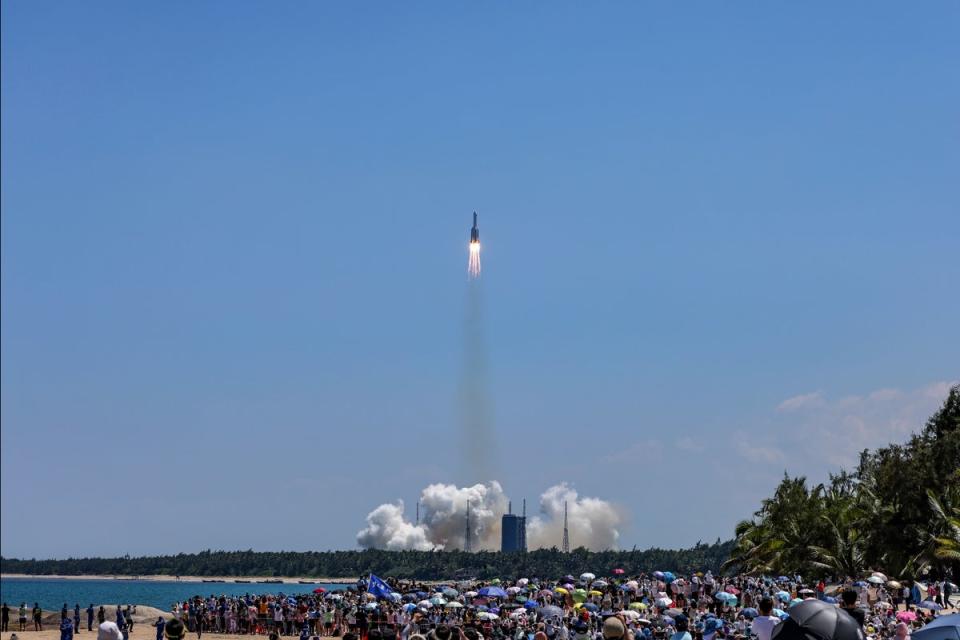Chance of someone being killed by out-of-control Chinese rocket is much higher than it should be, say experts

The chance of someone being killed by the out-of-control Chinese rocket that is currently falling to Earth is much higher than it should be, experts have warned.
A Chinese Long March 5B rocket, launched into space over the weekend, is currently dropping back down to Earth. Experts are unable to predict where it will land – or how much damage it might cause when it does.
But the chance of it landing somewhere that injures or kills someone this weekend is one-in-1,000 to one-in-230, well above the internationally accepted casualty risk threshold of one-in-10,000, according to the US government funded Aerospace Corp.
But the risk posed to any single individual is far lower, on the order of six chances per 10 trillion, said Aerospace analyst Ted Muelhaupt. By comparison, he said, the odds of being struck by lightning are about 80,000 times greater.
The overall risk to people and property on the ground is fairly low, given that 75% of Earth’s surface in the potential path of debris is water, desert or jungle, he said.
Nevertheless, the possibility exists for pieces of the rocket to come down over a populated area, as they did in May 2020 when fragments of another Chinese Long March 5B landed on the Ivory Coast, damaging several buildings in that West African nation, though no injuries were reported, Mr Muelhaupt said.
By contrast, he said, the United States and most other space-faring nations generally go to the added expense of designing their rockets to avoid large, uncontrolled re-entries - an imperative largely observed since large chunks of the NASA space station Skylab fell from orbit in 1979 and landed in Australia.
Ultimately, the rocket body will disintegrate as it plunges through the atmosphere but is large enough that numerous chunks will likely survive a fiery re-entry to rain debris over an area some 2,000 km (1,240 miles) long by about 70 km (44 miles) wide, independent U.S.-based analysts said on Wednesday.
The probable location of the debris field is impossible to pinpoint in advance, though experts will be able to narrow the potential impact zone closer to re-entry in the days ahead.
The latest available tracking data projects re-entry will occur around 0024 GMT Sunday, plus or minus 16 hours, according to Aerospace.
Additional reporting by Reuters

 Yahoo Finance
Yahoo Finance 